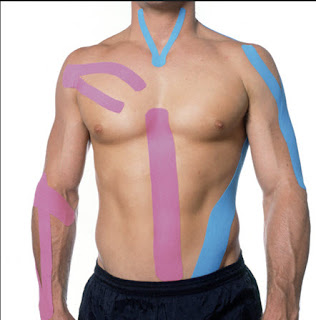By Dr. Steven Warfield
When it comes to maintaining our health we are all guilty of looking for the next shiny thing that promises to provide a quick fix. Anything that will reduce or better yet eliminate the tedium of actually doing work in order to receive the desired benefit is all we crave. Let’s face it, instant gratification is so ingrained in the American psyche that it’s practically incorporated into our DNA. So for today’s blog I thought I would take a few minutes to review several popular “quick remedies” that seem to be all the rage to see if they have any medical efficacy.
Can Titanium Necklaces Enhance Sports Prowess
For the past few years a number of prominent sports stars have touted the game enhancing attributes bestowed upon them by wearing titanium necklaces. Created in the 1980’s by Yoshiro Hirata, his Phiten Company is one of the world leaders in manufacturing titanium infused products. According to the company’s literature, titanium necklaces and bracelets supposedly work by stabilizing the flow of electricity used by nerves to communicate signals to various parts of the body. While a number of sports stars swear by them, to date there is no scientific evidence that can support Phiten’s claims. In a quick review of review sites, there were those who gave credence to the effectiveness of this technology along with just as many who reported no noticeable benefits. Without scrupulous scientific study, any reported benefits of wearing titanium could be just as likely the result of the placebo effect as it is of any real medical benefit.
Good or Bad Vibes?
Vibration-based exercise equipment has also shown a surge in popularity as of late, touted as a revolutionary way to add muscle tone. The developers of the devices also claim that the use of these devices can also cut down on workout time. Unlike titanium necklaces, this technology has been the subject of several medical studies, including one sponsored by NASA.
“A 2009 study by the University of Antwerp in Belgium and Artesis University College seems to show that vibration plates do work. In the study, obese women who followed a healthy diet and exercised using vibration plates lost more weight long-term, including more hard-to-lose belly fat, than women who followed a healthy diet and conventional exercise.
The group who used vibration plates performed basic moves such as squats, push-ups, calf rises, lunges and ab crunches on the machines. They performed each type of 10 exercises for 30 seconds each, and gradually built up to 60 seconds each.
They followed this program for 6 months. The group using vibration plates lost an average of 11% of their body weight, compared with a 7% body weight loss for the group using conventional exercise methods. The group using vibration plates also lost the most belly fat. Additionally, the group using vibration plates maintained their weight loss 6 months after the initial 6-month study ended.”
As for the NASA study, their goal is not to buff up their astronaut corps. Their main goal is to stop prevent
bone loss that occurs in the weightless environment of space. Currently, astronauts in orbit spend an average of two hours per day working out with some fairly complicated devices that are resistance based. The problem is that this still has not stopped the muscle atrophy and bone loss inherent to everyone who ventures into space. A NASA funded study suggests that having astronauts stand on a vibrating plate for 10-20 minutes each day could slow bone loss.
"The vibrations are very slight," notes Stefan Judex, assistant professor of biomedical engineering at the State University of New York at Stony Brook, who worked on the research. The plate vibrates at 90 Hz (1 Hz = 1 cycle per second), with each brief oscillation imparting an acceleration equivalent to one-third of Earth's gravity. "If you touch the plate with your finger, you can feel a very slight vibration," he added. "If you watch the plate, you cannot see any vibration at all. Although the vibrations are subtle they have had a profound effect on bone loss in laboratory animals such as turkeys, sheep, and rats.” http://science1.nasa.gov/science-news/science-at-nasa/2001/ast02nov_
Despite these studies, the verdict is still out, since some researchers remain unconvinced, feeling that vibration equipment can lead to back pain and cartilage damage. Either way, vibration equipment is by no means a panacea, since it is used in conjunction with exercise. It doesn’t replace it. Even using the equipment properly should be done under the supervision of a professional. As one trainer in the FitDay article noted, “If it’s easy, you aren’t doing it correctly.”
Can Kinesio Tape Fix That?
 Most people first took note of this product during the 2008 Olympic Games, when athletes started showing up for competition replete with multiple strips of colorful tape affixed to their torso, abdomen, arms or legs. Called Kinesio Tape, it was developed in the 1970’s by Japanese chiropractor Dr. Kenzo Kase. At the time he was dissatisfied with sports taping methods then in use to combat joint pain. He theorized that in order to stabilize the joint, it was necessary to tape around the muscle to achieve joint correction. Unfortunately the sports tapes available at the time were too stiff and had a tendency to immobilize the joint. Therefore he started to experiment with tapes, trying to develop a product that had the same elasticity as muscle. Two years later he came up with a tape that was flexible enough to do the job. Thus was born Kinesio Tex Tape.
Most people first took note of this product during the 2008 Olympic Games, when athletes started showing up for competition replete with multiple strips of colorful tape affixed to their torso, abdomen, arms or legs. Called Kinesio Tape, it was developed in the 1970’s by Japanese chiropractor Dr. Kenzo Kase. At the time he was dissatisfied with sports taping methods then in use to combat joint pain. He theorized that in order to stabilize the joint, it was necessary to tape around the muscle to achieve joint correction. Unfortunately the sports tapes available at the time were too stiff and had a tendency to immobilize the joint. Therefore he started to experiment with tapes, trying to develop a product that had the same elasticity as muscle. Two years later he came up with a tape that was flexible enough to do the job. Thus was born Kinesio Tex Tape.
While less restrictive than traditional sports tapes, the real question is whether it can live up to the claims of its inventor. Several studies have been published:
“Kinesio
taping improves pain, range of motion, and proprioception in older
patients with knee osteoarthritis: a randomized controlled trial.” https://www.ncbi.nlm.nih.gov/pubmed/25706053
“A little elastic for a better performance: kinesiotaping of the
motor effector modulates neural mechanisms for rhythmic movements.” https://www.ncbi.nlm.nih.gov/pubmed/25309355
Despite all the evidence, many athletes still swear by the product.
Far from being simple to apply, devotees must be trained in how to properly apply the tape.
Kevin Anderson, managing director of Kinesio UK, admits that, "There's nothing magical in the tape, it certainly can't improve your performance or make you into Superman, but the way people use the tape is to lift the skin, reduce the pressure and that helps relieve pain and swelling."
 Other recent sports fads include such things as Strength Shoes (which make wearers look as though their tennies
have blown a flat), Compression Sleeves (which make it look as though you are
nursing a broken arm), and Breathe Right Nose Strips (which were originally
developed to curb snoring). The bottom
line is that when it comes to keeping the body in top physical shape, while
sports fads come and sports fads go, nothing enhances physical prowess more
than practice, practice, practice.
Other recent sports fads include such things as Strength Shoes (which make wearers look as though their tennies
have blown a flat), Compression Sleeves (which make it look as though you are
nursing a broken arm), and Breathe Right Nose Strips (which were originally
developed to curb snoring). The bottom
line is that when it comes to keeping the body in top physical shape, while
sports fads come and sports fads go, nothing enhances physical prowess more
than practice, practice, practice.
Dr.’s Steven Warfield and Dave Edenfield offer the most advanced treatments for back pain, sciatica, neck pain, whiplash and headaches. They also treat auto accident victims with state-of-the-art technologies. For more information visit http://www.lakewoodchiropracticjax.com/



I have been guilty of buying into a number of devices that claim to provide a quick fix. In my experience, the problem with most fads is that they are big on hype and low on delivering their touted benefits.
ReplyDeleteIt's amazing the junk that many Americans can be coaxed into buying. Especially if a celebrity endorses the product. I guess it true what PT Barnum said about one being born every minute.
ReplyDelete